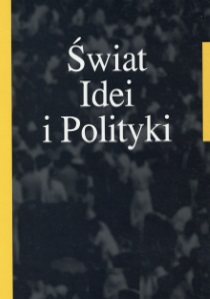Euroazjatycka Unia Gospodarcza: organizacja integracyjna czy rosyjskie narzędzie regionalnej hegemonii? Przykład członkostwa Republiki Kirgiskiej w EUG od 2015 roku
DOI:
https://doi.org/10.34767/SIIP.2020.19.06Słowa kluczowe:
EUG, Rosja, geopolityka, organizacje międzynarodowe, integracja, Republika Kirgiska, Kirgistan, imigranci zarobkowi, wskaźniki ekonomiczneAbstrakt
W tym artykule użyto przykładu Republicki Kirgiskiej dla analizy dwóch konkurencyjnych perspektyw na rolę Euroazjatyckiej Unii Gospodarczej (EUG). Perspektywa realistów utrzymuje, że EUG jest narzędziem rosyjskiej hegemonii w regionie i jest raczej narzędziem politycznym niż gospodarczym, stworzonym, aby służyć rosyjskim interesom narodowym kosztem pozostałych członków EUG. Perspektywa instytucjonalizmu liberalnego, ukazuje sprawę odwrotnie, postrzega EUG jako regionalną organizację integracji gospodarczej, która jest korzystna dla wszystkich członków. Analizując przypadek kirgiski, jasne staje się, że jest zbyt wcześnie, żeby określić, która z dwóch wymienionych perspektyw jest prawidłowa, jako że dane wskazują obecnie na prawidłowość tych dwóch podejść.
Bibliografia
Akeneev, J. (2017, 31 January). “Pros and cons of Kyrgyzstan participation in EAEU”, paper presented in expert meeting “Integration in
Gast, A-S. (2018). “Kyrgyzstan and EAEU: A partnership with Obstacles”. Policy Brief, 45, Academy of OSCE in Bishkek.
Haas, E. (1958). The Uniting of Europe. Available at: http://www.europarl.europa.eu/100books/file/EN-H-BW-0038-The-uniting-of-Europe.pdf
Keohane, R. (1984). After hegemony: Cooperation and discord in world political economy. Princeton: Princeton University Press.
Kropatcheva, E. (2012). Russian foreign policy in the realm of European security through the lens of neoclassical realism. Journal of Eurasian Studies, 3, 30–40. https://doi.org/10.1016/j.euras.2011.10.004
Kirkham, K. (2016). The formation of EAEU: How successful is the Russian regional hegemony? Journal of Eurasian Studies, 7(2), 111–128. https://doi.org/10.1016/j.euras.2015.06.002.
Kudryavtseva T. (2019, 1 April). Ситуация на границе. Бизнес терпит убытки, чиновники по-прежнему бездействуют. Available at: https://24.kg/ekonomika/113483/
Mearsheimer, J. (1994–1995). False promise of International Institutions, International Security, 19(3), 5–49.
Moravcsik, A. (1998). The Choice for Europe: Social Purpose and State Power from Messina to Maastricht. Cornell University Press.
Pedersen, T. (2002). Cooperative hegemony. Power, ideas and institutions in regional integration, Review of International Studies, 28(4), 677–696.
Sabyrbekov, R. (2019). Interview on March 26, 2019 at AUCA. Bishkek.
Sariev, T. (2017, April). Lecture at American University of Central Asia in April 2017 on joining KR in EAEU.
Schrader, H. (2019). Interview in Bishkek, March 2019.
Toktogazieva, S. (2019). Interview, on April 3, 2019 at AUCA, Bishkek.
Van Herpen (2014). Putin’s wars: The rise of Russia’s new imperialism, Maryland: Rowman and Littlefield publisher.
Vinokurov, E. (2017). EAEU: Current state and preliminary results, Russian Journal of Economics 3, 54–70.
Ziadullaev, S., Ziadullaev, N., (2017). EAEU: the test of time (ЕАЭС: Испытание временем), Vestnik RFFI Gumanitarnye I obshestvennye nauki, 3, 71.
Ziadullaev N., (2014). EAEU between polictics and economics, Problemy teorii and praktiki upravleiya, 8. Ministry of Economics of Kyrgyz Republic, indirect interview with representatives, on April 4, 2019 in Bishkek.
National Bank of Kyrgyz Republic. (2019). Available at: https://tradingeconomics.com/kyrgyzstan/foreign-direct-investment
Official web site of Ministry of Economic Development of Kyrgyz Republic. Available at: http://mineconom.gov.kg/ru/direct/6
NSC – National Statistic Committee of Kyrgyzstan. Available at: http://stat.kg/en/
Pobrania
Opublikowane
Numer
Dział
Licencja
Prawa autorskie (c) 2020 Świat Idei i Polityki

Utwór dostępny jest na licencji Creative Commons Uznanie autorstwa 4.0 Międzynarodowe.

